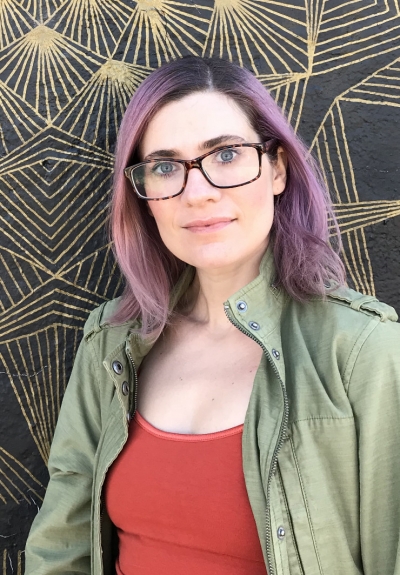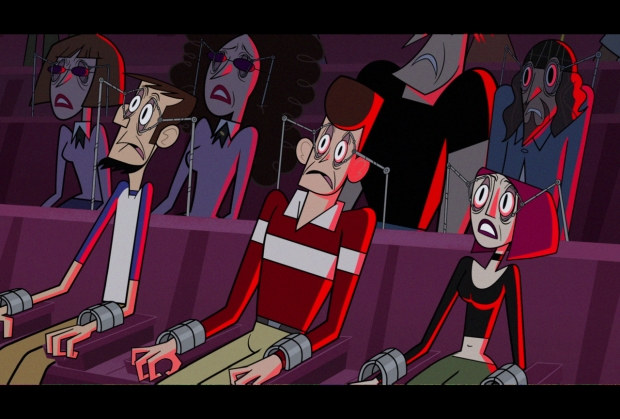Supervising Director Anna Hollingsworth talks about the resurrection of the beloved adult animation sitcom, whose first two episodes premiered May 23 on HBO Max, with two new episodes dropping every Thursday, beginning June 1.
A mere 20-some years after it first premiered on Canadian cable network Teletoon in 2002 (and on MTV in early 2023), the pioneering and ill-mannered adult animated sitcom Clone High is back for a second season! Created by Phil Lord, Christopher Miller and Bill Lawrence, all of whom return for the second go-round, the “gleefully anarchic and relentlessly silly cult favourite” (Andrew Parker, The Gate) looks at what it might be like if adolescent clones of famous historical figures happened to be in high school together.
Featuring a central cast of characters who were introduced in Season 1 – Abe Lincoln (Will Forte), Joan of Arc (Nicole Sullivan), John F. Kennedy (Christopher Miller), and Cleopatra (Mitra Jouhari) – the new season also includes “newcomers” Frida Kahlo (Vicci Martinez), Harriet Tubman (Ayo Edebiri), Confucius (Kelvin Yu), and Christopher Columbus (aka Topher Bus, voiced by Neil Casey). Much of the show’s wacky humor derives from the contrast between the characters’ well-known historical virtues and legacies and their latter-day incarnations as typically jerky adolescents.
The reboot of Clone High delighted not only at-home viewers who had embraced the first season of the series, but also some highly accomplished artists.
“Because Clone High is so beloved amongst animation folks, we had a stellar group of directors who were fans of the original season,” says Supervising Director Anna Hollingsworth (BoJack Horseman, The SpongeBob Movie, The Ricky Gervais Show). These include Mark Ackland, who worked as a designer on Season 1; South Park veteran Jack Shih; Kristen Morrison (SpongeBob SquarePants); and Animation Supervisor Justin Nichols (Wander Over Yonder, Kid Cosmic).
We spoke with Hollingsworth about her duties on the show, what it was like to bring a 20-year-old series back to life, and how she and Clone High came to be in the same place at the same time.
AWN: The show’s reboot was a long time coming. When did you come on the project, and what were your first thoughts about how the show would be resurrected?
Anna Hollingsworth: I first came on Clone High in the early summer of 2021. Having worked with [animation and production studio] ShadowMachine on BoJack Horseman as animation director, it felt a bit like returning to family. I was a big fan of the initial run of Clone High and watched it religiously when it was on MTV. I just thought it was so weirdly wonderful and I appreciated the satirical portrayal of all the teen dramas I had loved growing up. I can honestly say this was a bit of a dream project for me. I was also very familiar with the many ways in which reboots can go wrong, and felt a huge responsibility to not do that.
AWN: What were your main responsibilities on the show?
 AH: My job has encompassed having a voice in design, story, animation, music, hiring, etc. During our animatic stage, my primary job was working alongside our directors to create the animatics, but I never wanted to shy away from getting my hands dirty. I would regularly help board, create mouth charts, animate retakes – basically whatever supported the team to create the best end product possible. Luckily, we have incredibly talented people involved that I have complete faith in. That makes the job much easier.
AH: My job has encompassed having a voice in design, story, animation, music, hiring, etc. During our animatic stage, my primary job was working alongside our directors to create the animatics, but I never wanted to shy away from getting my hands dirty. I would regularly help board, create mouth charts, animate retakes – basically whatever supported the team to create the best end product possible. Luckily, we have incredibly talented people involved that I have complete faith in. That makes the job much easier.
AWN: What was the design process like?
AH: Working with our art director Tara Bilinger and animation supervisor Justin Nichols has been such a pleasure. From the start, we all agreed that we wanted to do our best to stay as true to Season 1 as possible, since the UPA-meets-90s-CN look of the show was one of the aspects that made it so appealing.
From an animation standpoint, the original run was brilliant in its restraint. The animation isn't complex, but the design is so graphic and appealing. There are so many examples from Season 1 that have these gorgeous compositions and pushed expressions to create this over-the-top dramatic parody. The flattened perspective backgrounds elevate the medium.
We wanted to make sure we could capture the Season 1 look as closely as possible. In story, we avoided using real-world perspective and kept the world very graphic. Movement-wise, we didn't want a bunch of overshoots, settles, and overlapping action simply because we could, but rather wanted to remain faithful to our source material in our timing and spacing. FX-wise, we didn't want anything to look like After Effects was thrown at it. We had to be a bit subtle and rough around the edges. We even talked about going with a traditional pipeline, but ultimately it would have been unfeasible with all the script revisions post-color.
AWN: Did you do any animation testing?
AH: I created a short test for our international animation candidates, which involved recreating a walk cycle from Season 1 that had some of the volume changes and hand-drawn quirks of traditional animation, as well as a quick acting scene. [Canadian animation studio] Jam Filled Entertainment passed the test with flying colors.
AWN: What size team were you supervising, and what tools were used to do the animation/compositing?
AH: In Story, we had three teams of four at any given time. The animation was done in Harmony and compositing was done in After Effects, led by our incomparable comp supervisor, Nick DeMartino. Our comp team pulled off some really extraordinary special segments over the course of the season. If you watch Episode 9, you'll see what I mean! They were handed a lot of challenges throughout, usually at the eleventh hour, and whipped up something brilliant.
AWN: What were the biggest challenges for you on the show?
AH: Aside from trying to simply live up to Season 1, a Lord Miller production is a very iterative process, so each episode would entail many versions of scripts and animatics. We probably made three animatics for every one we ended up using. Even after we got color back, an episode could still change significantly! We went back to boards regularly to make sure the story was sound and the jokes were playing, which is less common in TV animation.
Since this labor-intensive approach utilizes so many resources, it was often all hands on deck. We have a robust team of in-house retake animators, so we were able to adapt quickly to dialogue changes. I reviewed every shot to make sure it was ready before passing it on to our editors, Ron Babcock and Molly Yahr.
AWN: What can you share about what’s we’ll be seeing?
AH: If you've ever wondered why [robot butler/vice principal/dehumidifier] Mr. Butlertron calls everyone "Wesley," you may have an answer in store! Seriously though, there are more weird, wacky, horny moments than you could imagine, as well as some celebrity cameos, and some damn good music that you will not be able to get out of your head (sorry, not sorry).











